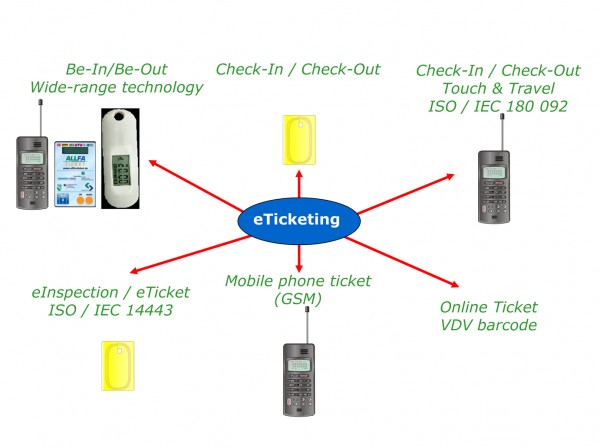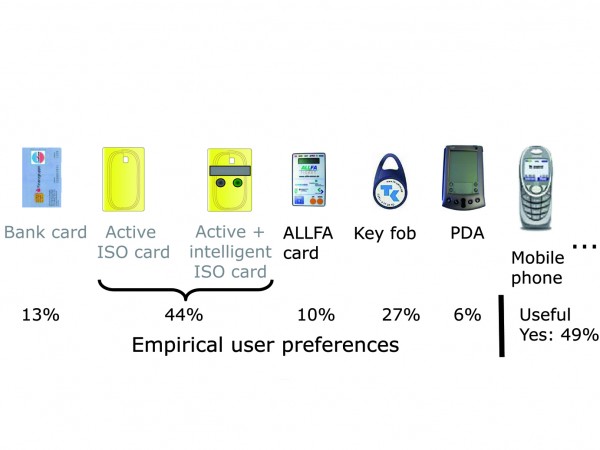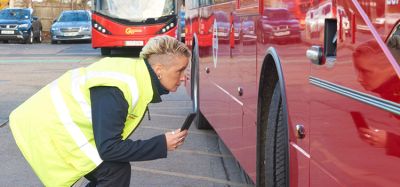eTicketing in Europe – active support from the Kontiki Working Group
- Like
- Digg
- Del
- Tumblr
- VKontakte
- Buffer
- Love This
- Odnoklassniki
- Meneame
- Blogger
- Amazon
- Yahoo Mail
- Gmail
- AOL
- Newsvine
- HackerNews
- Evernote
- MySpace
- Mail.ru
- Viadeo
- Line
- Comments
- Yummly
- SMS
- Viber
- Telegram
- Subscribe
- Skype
- Facebook Messenger
- Kakao
- LiveJournal
- Yammer
- Edgar
- Fintel
- Mix
- Instapaper
- Copy Link
Posted: 15 December 2010 | Dr. Manfred Ritschel, Past Chairman of the Kontiki Working Group | No comments yet
The Arbeitskreis für kontaktlose Chipkartensysteme für Electronic Ticketing (Kontiki – Working Group for contactless smartcard systems in electronic ticketing) was founded in 1998 and sees itself as a product- and systemindependent platform for electronic mobility systems based on contactless media. The focus of its work is on the use of contactless smartcard and other mobility systems in the field of public transportation.
The Arbeitskreis für kontaktlose Chipkartensysteme für Electronic Ticketing (Kontiki – Working Group for contactless smartcard systems in electronic ticketing) was founded in 1998 and sees itself as a product- and systemindependent platform for electronic mobility systems based on contactless media. The focus of its work is on the use of contactless smartcard and other mobility systems in the field of public transportation.
The Arbeitskreis für kontaktlose Chipkartensysteme für Electronic Ticketing (Kontiki – Working Group for contactless smartcard systems in electronic ticketing) was founded in 1998 and sees itself as a product- and systemindependent platform for electronic mobility systems based on contactless media. The focus of its work is on the use of contactless smartcard and other mobility systems in the field of public transportation.
The Kontiki Working Group currently has 80 members drawn from transit authorities, transportation companies, the industry, consultancies, research institutes and the banking sector. The content presented in this article is the result of the activities of three standing Kontiki Working Groups (WG) – Migration WG, Interoperability WG and Mobility WG. The Interoperability Working Group focuses on the requirements of standardisation and interoperability at an international level, in particular in close cooperation with the UITP International Committee for Information Technology and Innovation, the Transport Card Forum (UK), ITSO, CLUB (Contactless User Board), the Calypso Network Association and other partners.
After discussions about the eTicket in a relatively fixed, contact-based form started in the 1990s, while at the same time initial contactless applications were introduced at the local level or in various isolated regions in the context of pilot tests, demonstrations and as part of the EU projects ICARE1 and CALYPSO2, the last 10 years have seen a general change from a vision to real applications in production systems with a significant preference for contactless systems with a wide range of different user media. This is particularly noticeable in the area of user media, where in addition to the smartcard in the conventional ISO format or in media with different form factors, the mobile telephone is increasingly being used as a mobile user device. However, with the overall positive development of the past 10 years, questions are increasingly emerging relating to the interoperability of these local applications based on a European standard, and concerns are being expressed that – now that the eTicket has overcome tariffrelated resistance to the use of public transport – such isolated applications will create new (electronic) barriers in the eyes of the customer. For this reason it is vital to underline that it is not technology-based development but customer interest that must be or become the primary driver.
At the core of the customer’s interest is the vision of seamless public transport where every local transport customer can feel welcome and comfortable wherever he/she wishes to travel. From the customer’s point-of-view, implementing this vision of seamless public transport moves in two fundamental directions. First, seamless access to local public transport with an electronic user medium and the associated technology involved in registering access to the eTicket system, and second, seamless payment within the travel chain. This requires the interoperability of the eTicket regarding all data elements, applications, technical systems and components, back-end systems and payment systems – as an initial step also as collaboration between different payment systems and partners.
In this respect, the UITP Focus Paper ‘Everybody Local Everywhere’3 was a fundamental publication in which the UITP International Committee for Information Technology and Innovation and representatives from national eTicket systems such as the VDV Core Application, ITSO and Calypso addressed and discussed these questions, proposing an explicit recommendation for the basic direction of practical interoperability.
The Kontiki Working Group has dealt with these issues in great detail and presented its position to the UITP World Congress in Helsinki in 20074.
The IFM Project (2008 to 2010) went into greater detail with these approaches with a broad interest group involving national systems in the United Kingdom (ITSO), (((eTicket Deutschland and Calypso-based systems (with RATP and SNCF) as well as including additional partners such as the Dutch OV-Chipkaart, the Danish/Swedish Rejsekort, ATCA Rome and JR-East Japan in a group of participants from 21 countries, and came up with a basis for concrete migration steps.
This article will investigate selected technical aspects and the further process of migration.
Technical developments
There are today so many types of electronic fare management systems in use in Europe based on smartcards that it is almost impossible to list them all. Well-known examples include MoBiB, Oyster (London), Navigo (Ile-de-France, France), VDV Core Application in a wide range of projects in Germany and OV-Chipkaart (Netherlands). Further applications include Rejsekort in Denmark and Sweden, Translink in the Netherlands, Lisbon/Porto, Barcelona and STIB in Belgium. There are also additional applications partly running as pilot tests or demonstrations with mobile phones as user media all with different interfaces, i.e. for both GSM and NFC (near field communication).
An overview of possible variants for eTicket systems based on user media can be seen in Figure 1.


Figure 1 Technical variants for the eTicket
To follow is a description of the applications:
Use of smartcards as user media on the basis of ISO/IEC 14443 for Check-in/Check-out and for electronic boarding inspection checking spatial and temporal validity as well as against a blocking list of monthly season tickets and other fare classes. There are a wide number of applications on a relatively fixed technical base. What is interesting in this context is the combination with a list of actions which could, for example, include downloading entitlements purchased by the customer online onto the user medium in the background when contact is made with the reading device for the first time.
Use of mobile phones as user media with an NFC interface on the basis of ISO/IEC 18092.
A particular example of this is the Touch&Travel project of Deutsche Bahn AG. Near field communication (NFC) allows fast, contactless and secure data transmission between an NFC mobile phone and a contact point, e.g. a (passive) Touch&Travel touchpoint with integrated RFID chip (radio frequency identification). There is a fast and secure connection with the Touch&Travel back-end system. The same mechanisms are used as with contactless smartcards. It can be assumed that mobile phones with NFC interface will soon become established in Europe in other sectors such as for payment in the retail trade and for other applications. The issue of smartcard vs. mobile phone often discussed in the context of the development of user media is not really important if we assume that a reading device can process both user media based on ISO/IEC 14443 as well as an NFC interface based on ISO/IEC 18092.
Use of mobile phones as user media with a GSM interface in mobile phone ticketing. There are a large number of applications in this field. The main difference between them is the level of security against forgery coupled with the options for payment processing often dependent on different national circumstances, i.e. sometimes via the mobile phone provider as an item on the phone bill and sometimes via the system or finance provider with a separate log-in process that this requires.
A further option are applications for BE IN/BE OUT (BIBO) systems with wide-range technology with regard to BIBO data communications technology and to the active user media that are then required.
The Rhein-Main Verkehrsverbund has developed a strategy plan for the period 2009- 2015 that aims to introduce electronic fare management (EFM) based on automatic fare determination with a BE IN/BE OUT system.
Development approaches for user media have so far been based on smartcards and on mobile phones. Investigations into user acceptance during the research project Intermobil5 (ALLFA card) proved that there are different types of user media for different target groups. The findings are shown in Figure 2.


Figure 2 Empirical user preferences for user media
This suggests that when purchasing tickets using BIBO user media (without mobile phone), for example, 44% of users prefer a medium based on an ISO smartcard. In all, 49% consider the deployment of a mobile phone to be useful as BIBO user medium.
From this we can derive two fundamental directions for development: first, with regard to the development of a transit-authority proprietary and affordable active BIBO user medium for mass deployment with a form factor that is yet to be defined and second, the deployment of mobile user devices with BIBO interface that are already on the market or under development.
A major part of the other investigations deal with the system-related decisions on the applicability, optimisation, cost-effectiveness and sustainability of newly developed and emerging data communications processes. The suitability of standardised wireless interfaces supported by mobile user devices in particular must be examined since they would allow mobile user devices to be considered for use as BIBO user media.
An initial assessment has shown that cellbased, trilateration and signal-strength based processes are all feasible for BIBO wide-range tracking. Besides the general assessment criteria of range, reliability, bandwidth and security, what really needs to be investigated are the primary requirements typical of local public transport regarding deployment for automatic fare determination relating to explicit localisation within the vehicle, reliability, registration probability, duration of transaction between minimum-distance stops and security against attacks and manipulation. These aspects need to be verified in a suitable test environment in the short term. This is something to be reported on in future.
European interoperability
A major precondition is interoperability between technical and application-related layers of the OSI layer model. We need to challenge the view that mere observance of technical standards such as ISO/IEC 14443 for contactless smartcards or simple compliance with certain data elements (EN 1545) and structures (EN 15320) will ensure interoperability between eTicketing systems. Interoperability requires technical and application-related standards to be met.
Looking at the current status of European standardisation, it can be assumed that the most important standards for local public transport applications already exist in the form of technical norms ISO/IEC 7810, 7816 14443 10 373 and application-related standards for data elements and formats on the card (framework standard EN 15320) and for roles and processes (EN ISO 24014).
The result of the agreement reached in the IFM project6 shows that national systems developed over the last few years such as ITSO, VDV Core Application and CALYPSO are able to adapt applications in such a way that they can be downloaded onto a multiple-application user medium.
The required approach for seamless travel makes it essential to specify the steps needed to achieve European eTicketing interoperability.
The IFM project6 has defined two steps for the global roadmap.
Step 1: Short-term solution
» Interoperability through shared multiapplication processes – flexible use of the medium by customers. This should be achieved in a first step by loading various ticketing applications onto one medium as the fastest and most cost-effective solution for the first stage of interoperability. This makes it possible to continue to use existing infrastructures and products. The regulatory framework for common European access must still be organised.
» Common download portal for local applications: customers will be able to download the required applications when the EU IFM media become available.
» Update and harmonisation of current standards relating to EU IFM. Linkages with emerging technologies (NFC, EMV etc.) must be facilitated and new roles defined.
Step 2: Long-term vision
» Development of a common EU IFM application for different media such as mobile phones, bank cards and USB sticks. The owners of the application, security management and the regulatory framework still have to be defined.
» Development of common products in order to achieve synergy effects in the areas of organisation, back-office functions and business models.
» Development of a commercial and technical framework to sell and process EUIFM products.
This results in an identifiable basic consensus regarding the development of eTicket systems in Europe with the first step on the way to interoperability being the multi-application. The Kontiki Working Group will be actively supporting these steps.
References
1. Integration of Contactless Technologies into Public Transport Environment
2. Contact And contactless environments Yielding a citizen Pass integrating urban Services and financial Operations
3. Everybody Local Everywhere Electronic – Ticketing Interoperability and Fare Management Co-operation, UITP Focus Paper 2007
4. Standards and Interoperability; UITP World Congress Helsinki 2007; Dr. Manfred Ritschel
5. Lead project Intermobil for Dresden region, funded by German Federal Ministry of Education and Research 1990 – 2005
6. Information on the final results of the 1st IFM project; UITP 2010
About the Author
Dr. Manfred
Ritschel Dr. Manfred Ritschel studied Engineering at the Engineering School for Transportation Technology, Dresden, and Economic Engineering at ‘Friedrich List’ College for Transportation, Dresden, and holds a University Lecturer Certification (Doctor of Economy) of the Faculty of Transportation and Traffic Sciences ‘Friedrich List’ of the Technische Universität Dresden. He is Managing Director of TCAC-GmbH, Dresden, Honorary Membership in UITP, Member of the International Committee for Information- Technology and Innovation of UITP and was for 12 years Chairman of Kontiki Working Group.
Related topics
Business Models, Fleet Management & Maintenance, Multimodality, Ticketing & Payments, Transport Governance & Policy
Issue
Issue 6 2010
Related organisations
Kontiki Working Group








